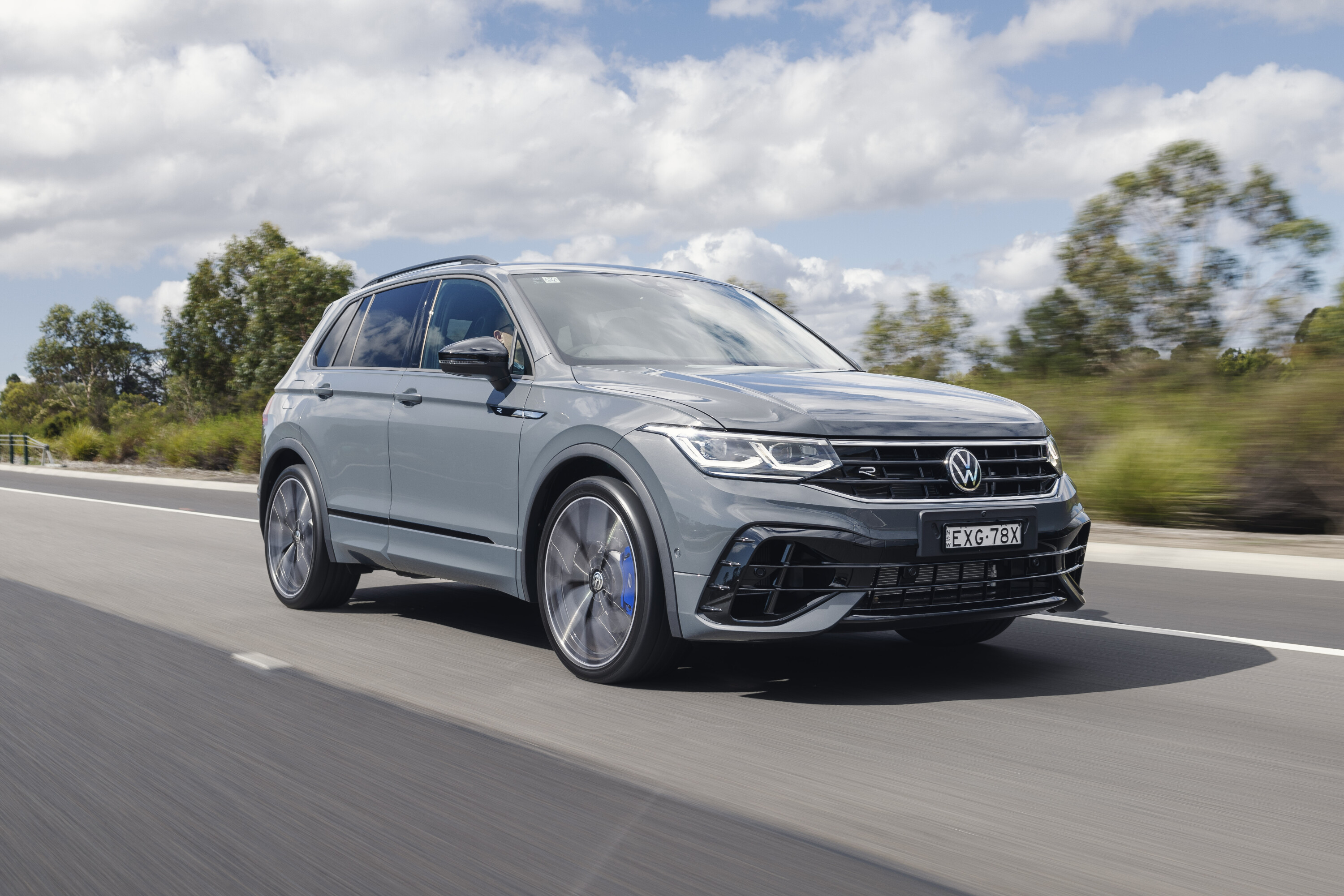
Score breakdown
Things we like
- Premium-feeling interior
- Great handling
- Comfortable ride
- One of the best boots in its class
Not so much
- Due to be replaced next year
- Premium price compared to rivals
- Centre screen starting to feel small
- Wait times for some models
The Volkswagen Tiguan is one of our favourite medium SUVs.
It comes with a thoughtfully designed interior, a good mix of powertrain options and a lovely ride/handling balance making it a delight to drive and own. It also offers an advanced suite of active safety systems.
When the current, second-generation Tiguan was launched in 2016, it set new benchmarks in its segment. Today, it’s starting to feel a little bit dated – and rivals are quickly catching up.
A new, third-generation Tiguan is due in late 2024 with a major cabin overhaul, new technologies and an even bigger boot.

JUMP AHEAD
- Pricing
- What body styles are available for the Tiguan?
- What features are standard in every Tiguan?
- What key features do I get if I spend more?
- How comfortable & practical is the Tiguan?
- How much boot space does the Tiguan offer?
- I like driving, will I enjoy this car?
- Which Tiguan engine uses the least fuel?
- What is the Tiguan’s towing capacity?
- How long is the warranty & what are the TIguan’s servicing costs?
- Which version of the Tiguan does Wheels recommend?
- What are the Tiguan’s key rivals?
Pricing
| 2023 Volkswagen Tiguan variant | Price |
|---|---|
| 110TSI Life | $42,490 |
| 132TSI Life | $46,490 |
| 162TSI Elegance | $54,290 |
| 147TDI Elegance | $55,790 |
| 162TSI R-Line | $57,790 |
| 147TDI R-Line | $59,290 |
| R | $70,490 |
| Prices exclude on-road costs |
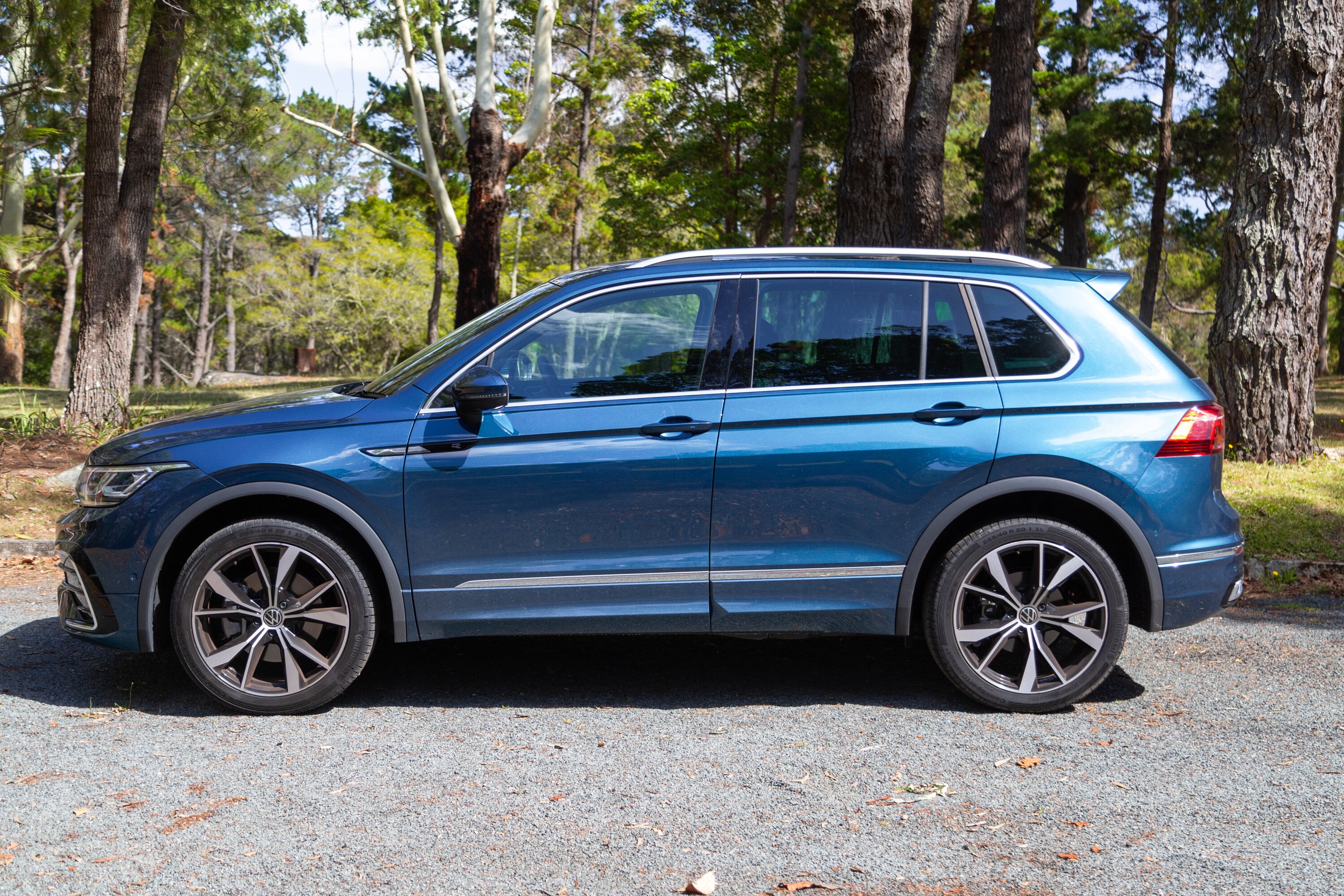
What body styles are available for the Volkswagen Tiguan?
The Volkswagen Tiguan comes as a five-door SUV only.
There are front-drive and all-wheel drive models, all seating five – although a longer, seven-seat Tiguan Allspace is also available (and outlined separately). The Tiguan is classed as a medium SUV and competes in the sub-$60K segment.
Five engine options are offered, all of which are turbocharged four-cylinder units. The range starts with a 110kW/250Nm 1.4-litre before moving to a 132kW/320Nm 2.0-litre, a 162kW/350Nm 2.0-litre and a 147kW/400Nm 2.0-litre diesel. There’s also the performance-packed 235kW/400Nm 2.0-litre.
No manual, six-cylinder, hybrid, plug-in hybrid or fully electric versions of the Tiguan are sold in Australia.
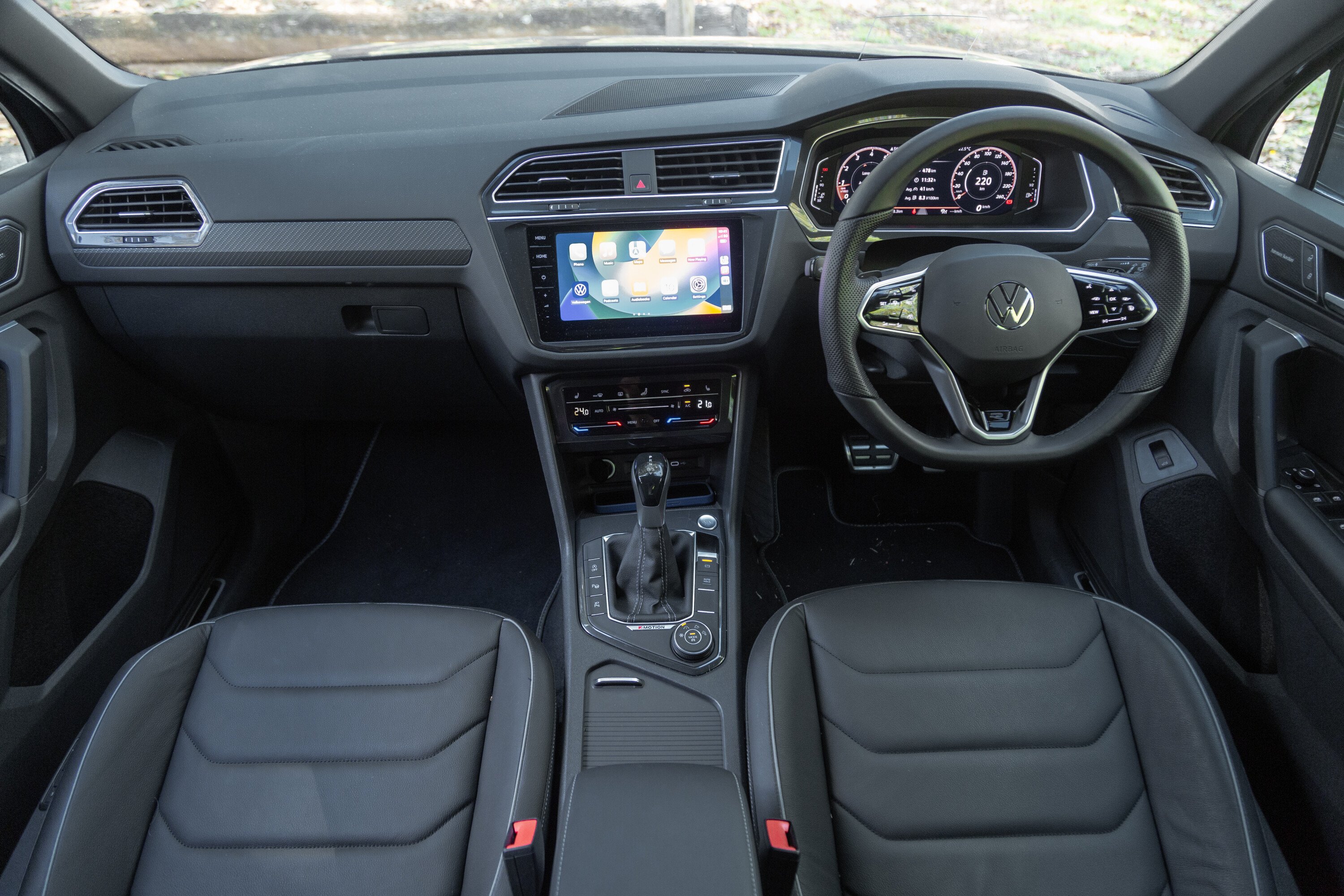
What features are standard in every Tiguan?
The features listed below are standard in the entry-level Life model and will appear in higher-grade models, unless replaced by more premium equivalent features.
| 2023 Volkswagen Tiguan standard features | |
|---|---|
| 10.25-inch digital instrument display | Electric folding, heated side mirrors |
| 18-inch wheels | Front and rear parking sensors |
| 8-speaker audio system | Lane-keep assist |
| 8.0-inch central touchscreen infotainment screen | Leather steering wheel with paddles |
| Adaptive cruise control | LED headlights with automatic high beam |
| Apple CarPlay and Android Auto | Manually adjustable front seats |
| Auto emergency braking | Passive suspension |
| Automatic dimming rear-vision mirror | Rain-sensing wipers |
| Cloth seat upholstery | Remote central locking with keyless start |
| Digital radio (DAB+) | Reversing camera |
| Drawers under the front seats | Satellite navigation |
| Driver attention monitor | Tri-zone climate control |
| Dust and pollen filter | Tyre pressure warning system |
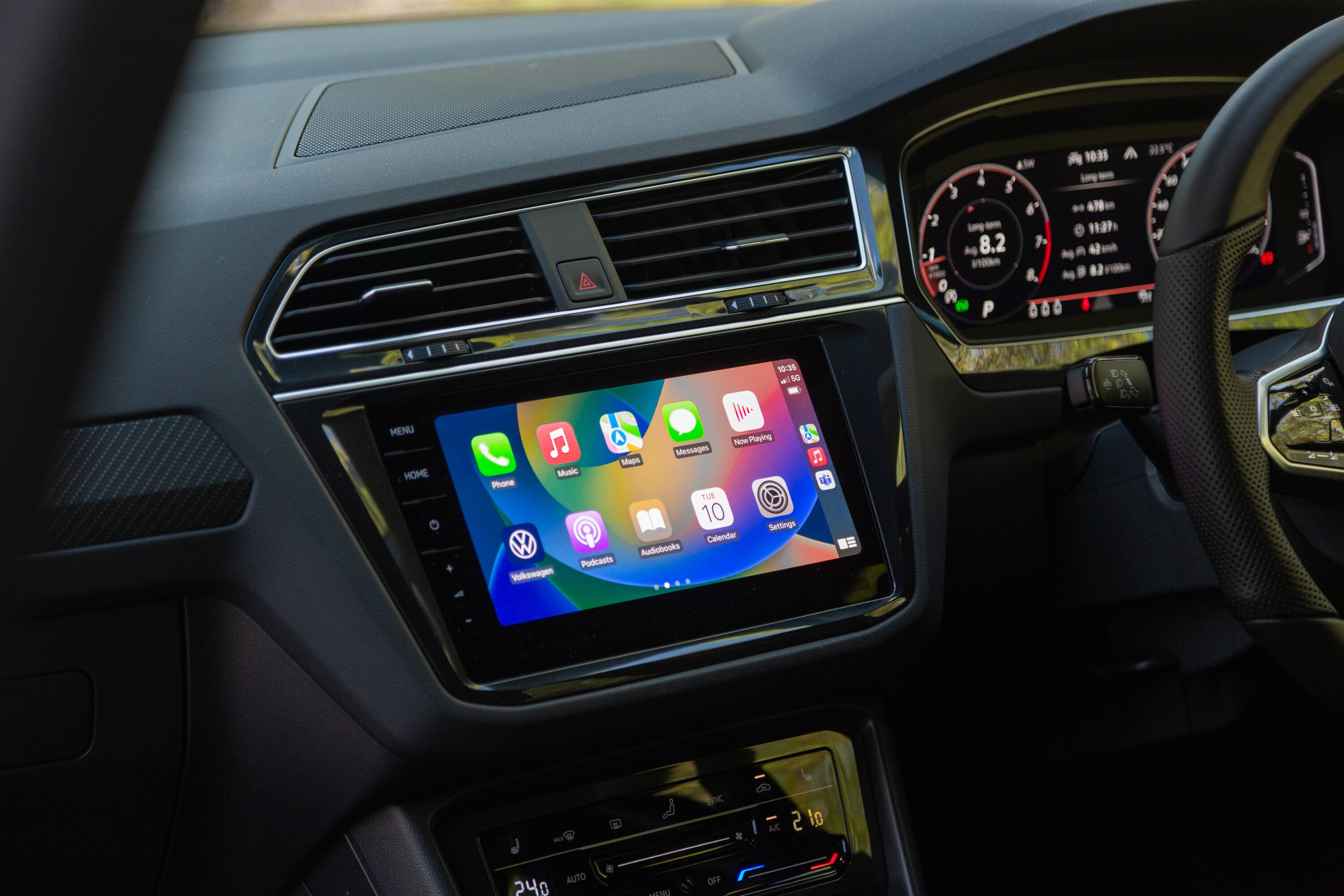
What key features do I get if I spend more?
It’s important to note here that the base Tiguan 110TSI Life comes with front-wheel drive, a 1.4-litre engine and a six-speed dual-clutch automatic transmission. Stepping up to the 132TSI Life upgrades to a 2.0-litre engine as well as all-wheel drive and a seven-speed dual-clutch auto.
As you head up the range from here, it’s all 2.0-litre powertrains with seven-speed dual-clutch automatic transmissions – as well as lots of other goodies.
Options across the range are metallic or pearl effect paint; and the electric opening-and-closing tailgate.
The Life can be optioned with a Luxury Package, which gives leather-appointed upholstery, an electrically adjustable driver’s seat with memory, heated front seats, a heated steering wheel and a panoramic sunroof.
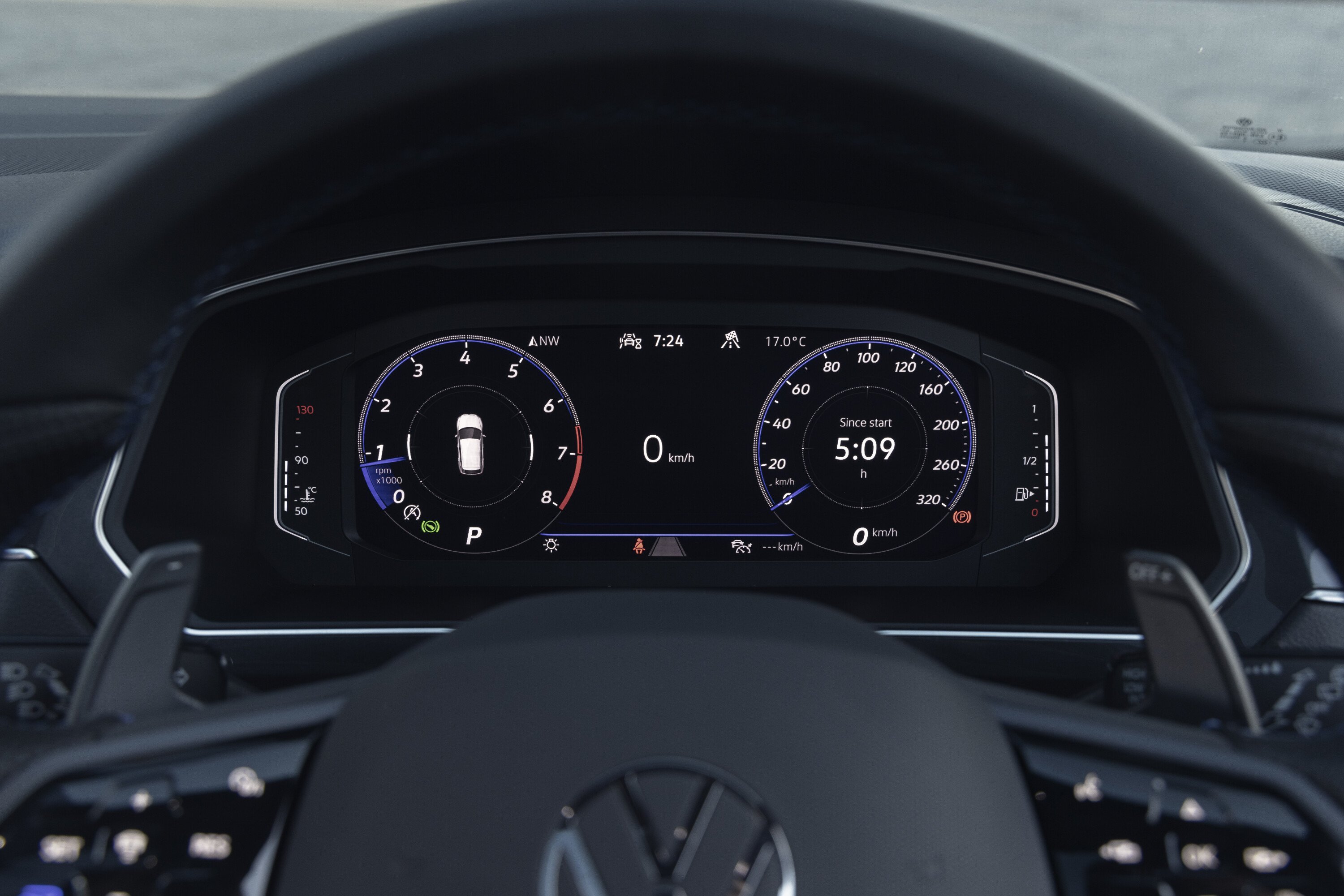
The only options on a Tiguan R are the sunroof and Harman Kardon sound system.
Elegance and R-Line grades can be optioned with the Sound & Vision Package (which includes a head-up display, the 360-degree top-down parking view and the 10-speaker Harman Kardon premium sound system); and a panoramic sunroof.
The top-spec, high-performance R adds as standard the metallic or pearl effect paint; electric opening-and-closing tailgate; 360-degree top-down parking camera view and head-up display. Its only options are the sunroof and Harmon Kardon sound system.
Front under-seat storage drawers are only available on the 110TSI with its manually-adjustable seats.
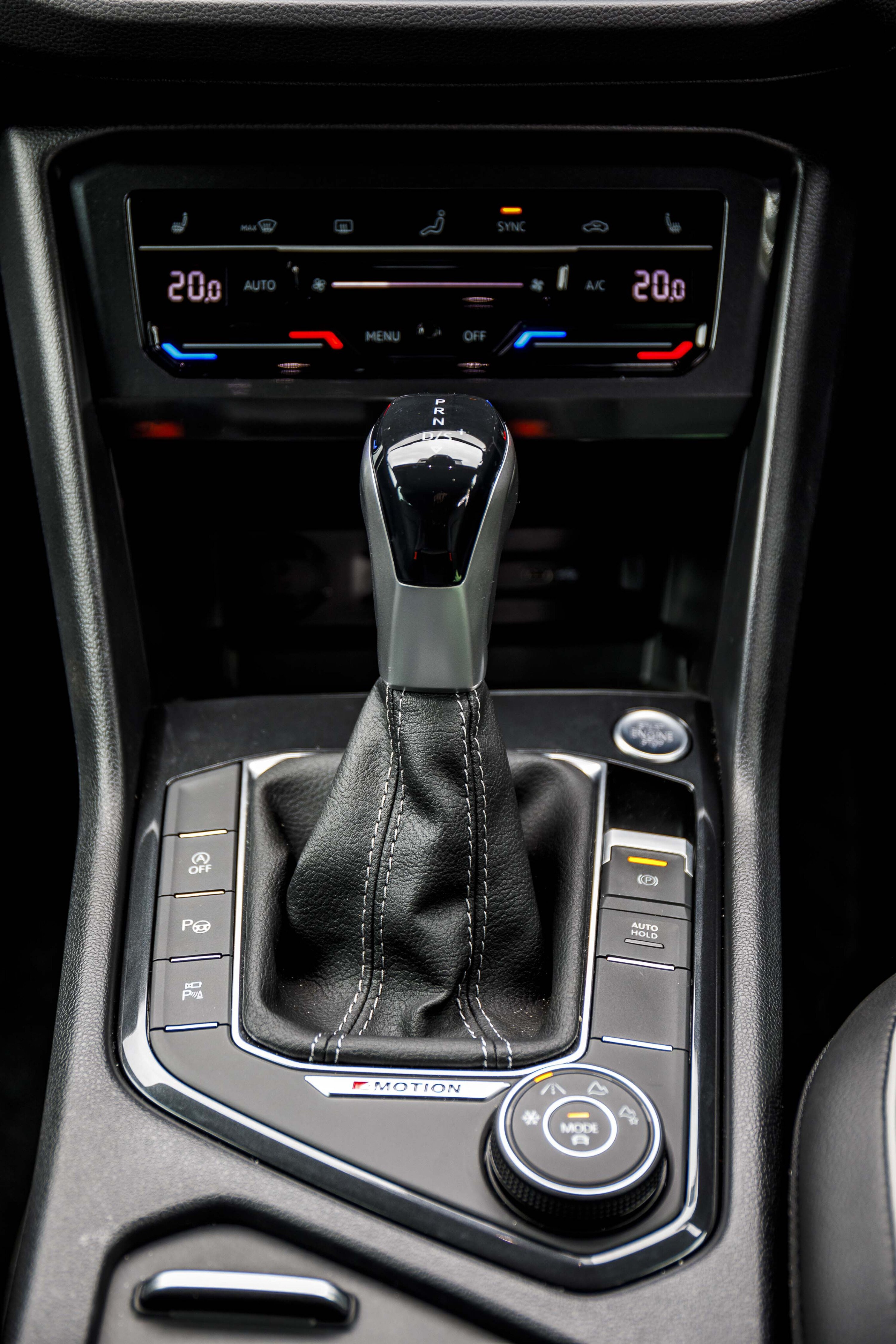
The Elegance also brings:
| 2023 Volkswagen Tiguan Elegance features | |
|---|---|
| Leather-appointed seat upholstery (a combination of real and fake leather) | 9.2-inch central touchscreen infotainment screen |
| Electrically adjustable front seats with memory settings | Tinted rear windows |
| Heated front seats | 30-colour ambient interior lighting |
| Heated steering wheel | Additional chrome and silver styling elements |
| 19-inch wheels | Adaptive suspension |
| More advanced u201cIQ Light Matrixu201d LED headlights | Side mirrors with memory settings |
Paying more again for an R-Line gets you those features plus:
| 2023 Volkswagen Tiguan R-Line features | |
|---|---|
| 20-inch wheels | Progressive steering (a bit sharper and more responsive) |
| R-Line sports steering wheel | Black interior ceiling headliner |
| LED tail-lights | Stainless steel foot pedals |
| Unique front and rear bumpers, R-Line side sills, rear spoiler and R-Line badges | |
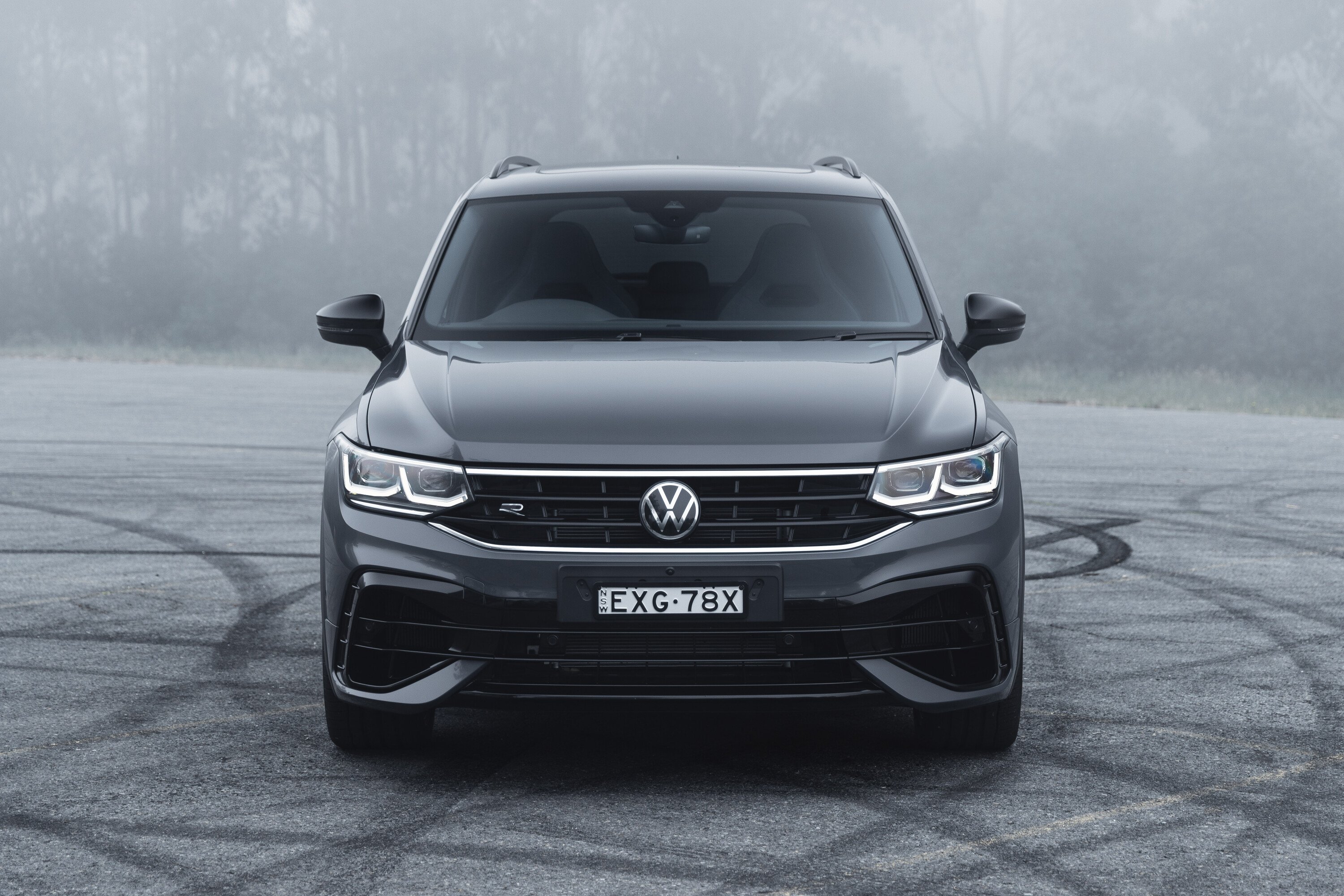
The performance-focused R, the most expensive version, has all-wheel drive and a powerful 235kW engine.
Other differences include:
| 2023 Volkswagen Tiguan R features | |
|---|---|
| 21-inch wheels | Performance chassis systems including ESC |
| Nappa leather-appointed upholstery | Torque vectoring |
| R-specific front and rear bumpers including with quad exhaust | Sports paddle shifters |
| Lots of other R-branded styling bits | Electric opening-and-closing tailgate |
| Bigger cross-drilled performance brakes with blue R calipers | Head-up display |
| Performance drive modes including synthetic engine sound | 360-degree top-down camera parking view |
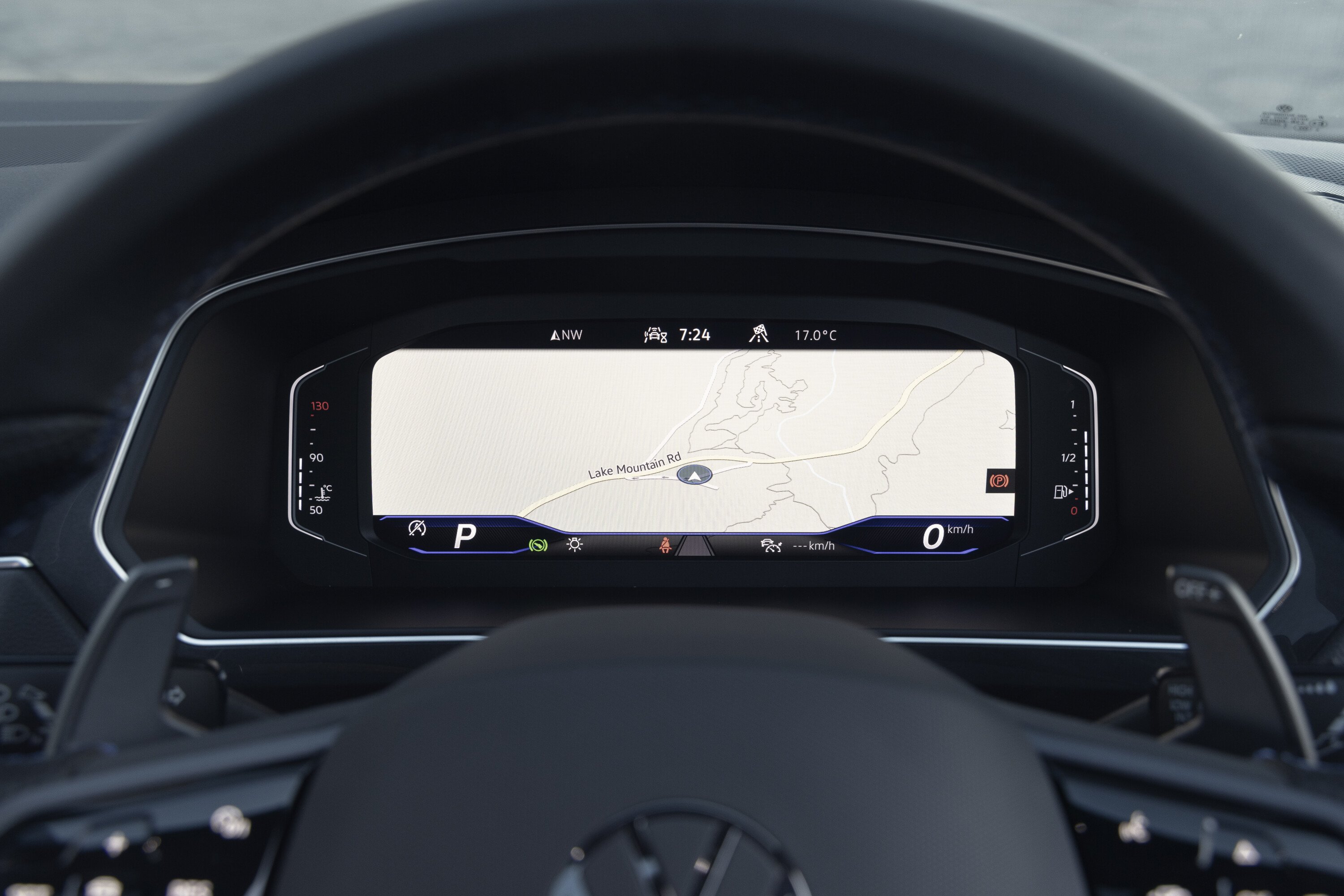
How safe is the Volkswagen Tiguan?
With advanced active and passive safety technology, most of it standard even from the cheapest 110TSI grade, the Tiguan has strong safety credentials.
The current Tiguan scored five stars in 2016 crash testing with the Australasian New Car Assessment Program (ANCAP) – although with ANCAP’s updated protocol, that is no longer considered valid in 2023.
For active safety, the entire range gets autonomous emergency braking (AEB) – and it is one of the more advanced systems on the market that works up to interurban speeds (30-80km/h) with cyclist and pedestrian detection. There’s also lane-keep assist, which nudges you back into your lane if you start straying out of it.
A reversing camera and front and rear parking sensors are fitted as standard across the entire range, and there’s also reverse AEB which will stop the car before you back into something. Although two small black marks against safety are the lack of blind-spot monitoring and rear cross-traffic alert.
The R comes with rear cross-traffic alert. All Tiguans come with a driver attention monitor which constantly scans your face and notifies you if it thinks you’re at risk of a microsleep.
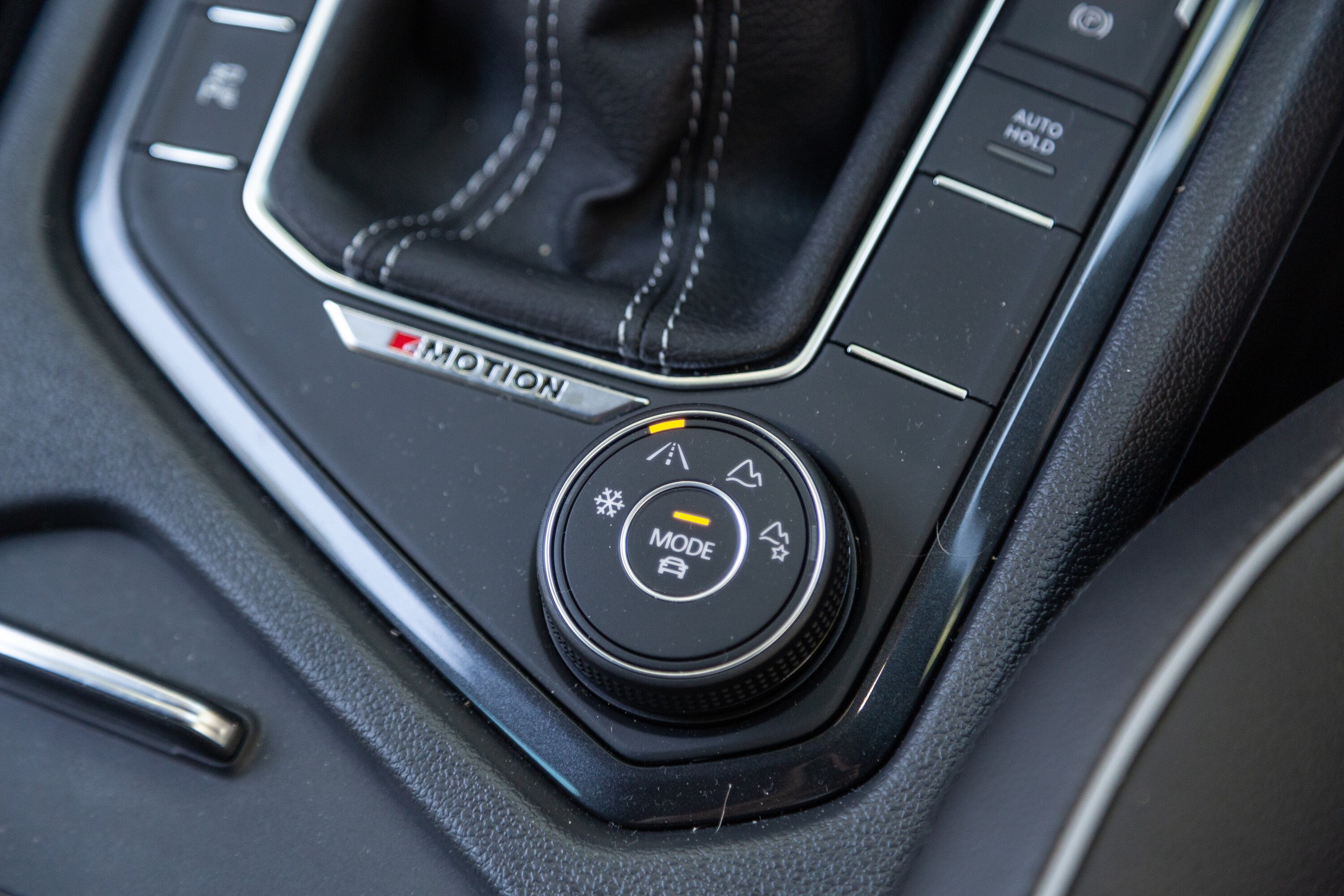
For passive safety, the Tiguan’s airbag suite includes dual front and dual front-side cushions, curtain airbags front and rear, plus a driver’s knee cushion.
Of its rivals, the Tiguan has one of the most relaxing semi-autonomous modes. Highway Travel Assist is what VW calls it, and it combines adaptive cruise control with lane trace assist to ease nerves on the freeway.
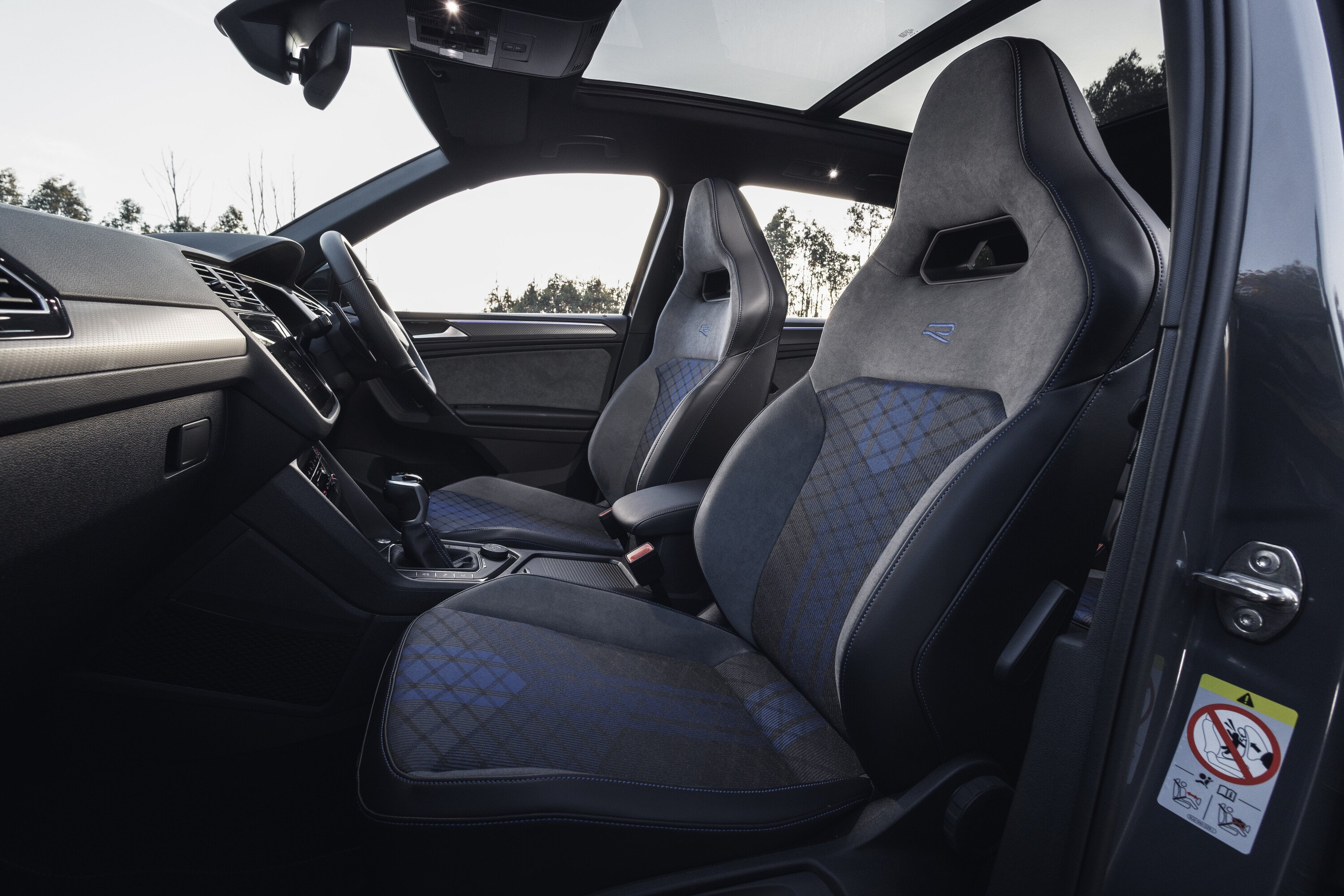
How comfortable and practical is the Volkswagen Tiguan?
Compared to its Japanese and Korean rivals, the Tiguan is incredibly comfortable and practical, offering a degree of German premiumness for a price well below what a German brand normally asks.
You can feel the sturdiness and quality of the uniform paint finish as you grab the Tiguan’s door handles (all of which are equipped with comfort access sensors).
Once inside, you’ll find extremely ergonomic vertically laid-out controls that make the cabin feel spacious – if not cutting-edge on the technology side.
The 162TSI’s 9.2-inch touchscreen is smaller than you’ll find in an up-spec Golf, but the Tiguan’s dual-zone climate controls are mercifully separate, located lower down with capacitive touch sliders. These can be finicky at first, but you grow accustomed to the functionality with time.
While it’s been around for a while, VW’s 10.25-inch digital instrument display (standard across the range) is yet to be outdone within its competitive set. It’s incredibly legible and its ability to show a moving interactive map enables you to predict the road ahead with soothsayer-like accuracy.
It also means you’re unlikely to get lost in an unfamiliar city with the standard navigation.
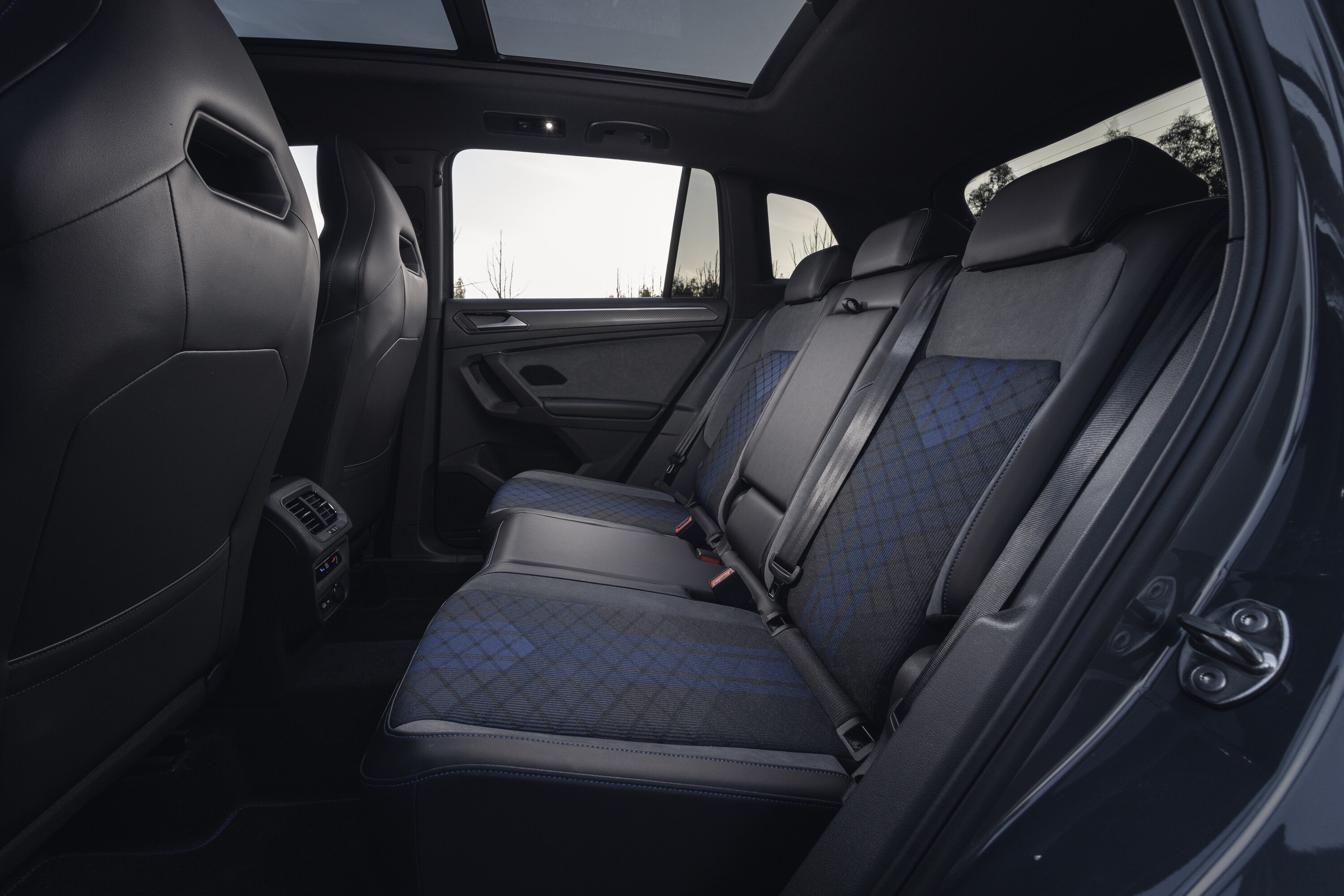
Material quality is respectable, if not ultra-plush. There are soft plastics where they matter such as on the dash and front door cards, and the door bins are flock-lined to stop bottles rattling about.
Interestingly, the Tiguan we drove in Sydney appeared to have slightly lower build quality than our Melbourne tester, with a few dash creaks evident over nasty bumps.
In 162TSI R-Line guise, seating is taken care of by heated and power-adjustable leather-appointed pews that are just to die for – supportive in the bolsters without ever being ‘too’ sporty for a family SUV; very well judged, Volkswagen.
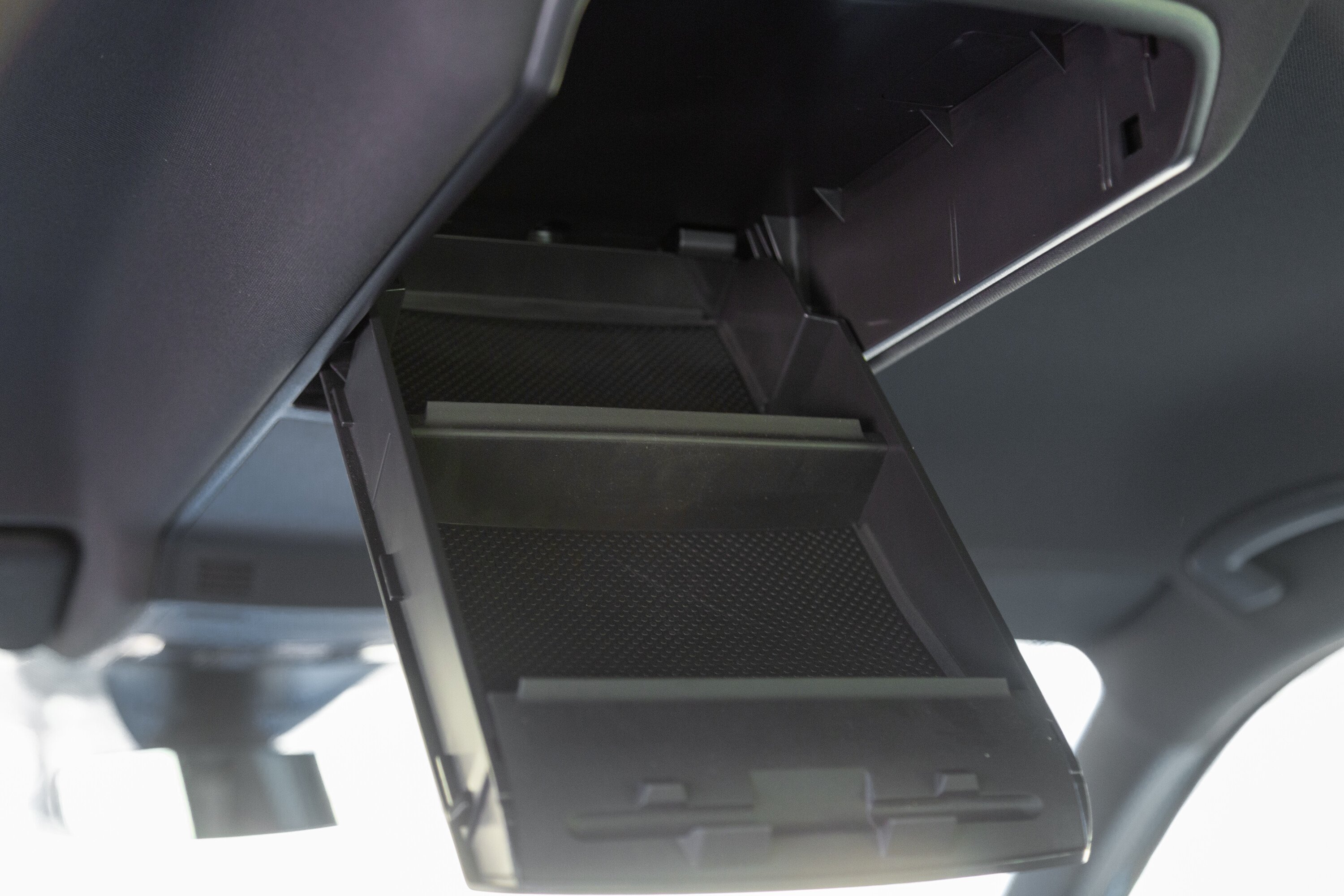
Although it may be one of the shortest medium SUVs – just over 10cm longer than something like a Kia Seltos or Mazda CX-30 from the next size down – the Tiguan is tremendously accommodating, with its high roof guaranteeing great headroom and a sliding second-row bench allowing you to shift priorities between occupant and cargo space.
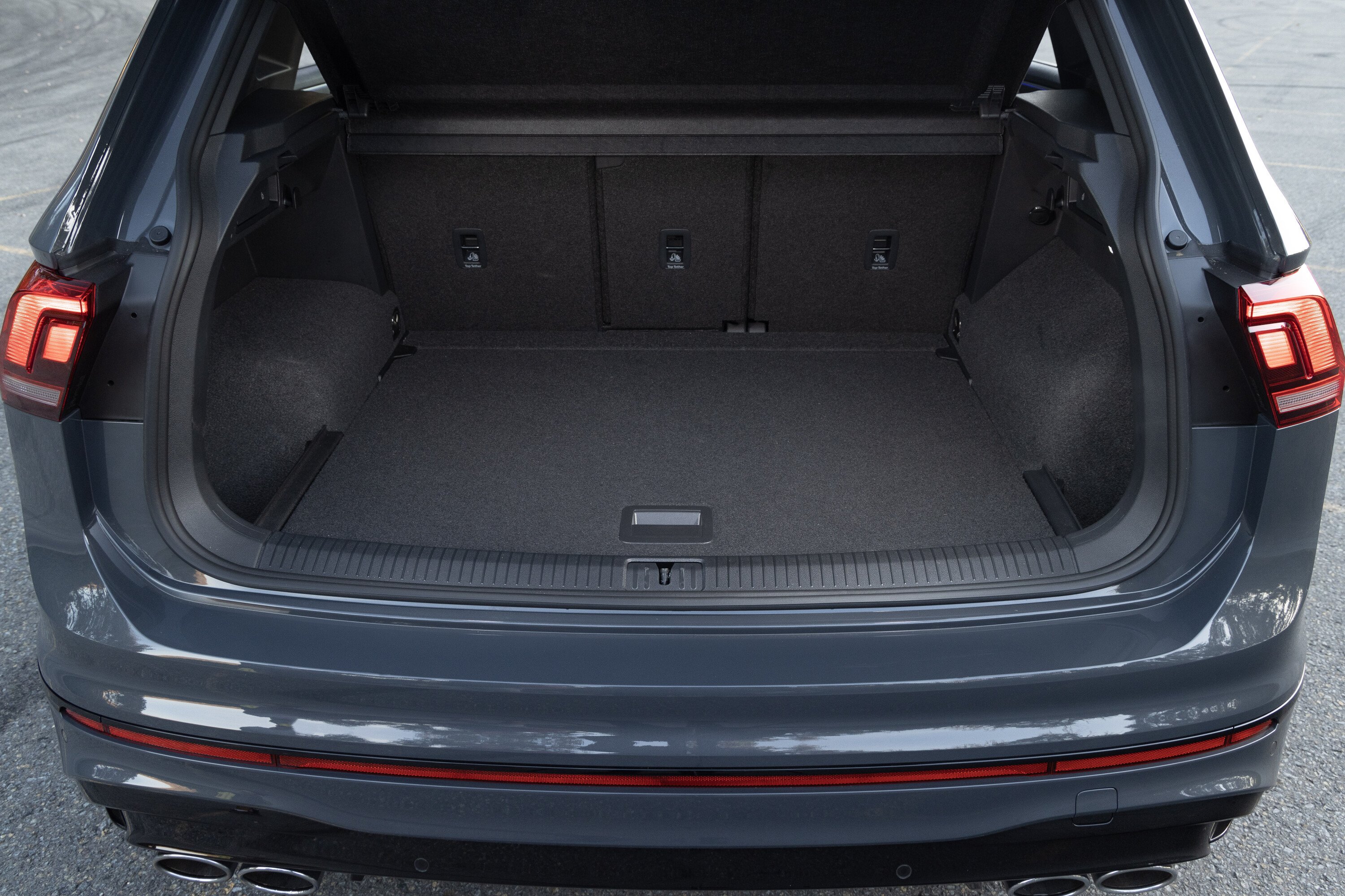
How much boot space does the Volkswagen Tiguan offer?
The Tiguan has a very usable boot thanks to its 40:20:40 folding second-row backrest – most cars these days are still 60:40, limiting practicality.
Its second row is also tilt-and-slide adjustable, meaning if you’re only lugging around small kids, you can slide the entire second row forward to maximise boot space. In terms of second-row practicality and boot space, the Tiguan is about as clever as it currently gets.
With the boot in its default position, and the rear seats set back to their furthest, the Tiguan’s boot is a great size, accommodating 615 litres, expanding to 1655L with the second row folded.
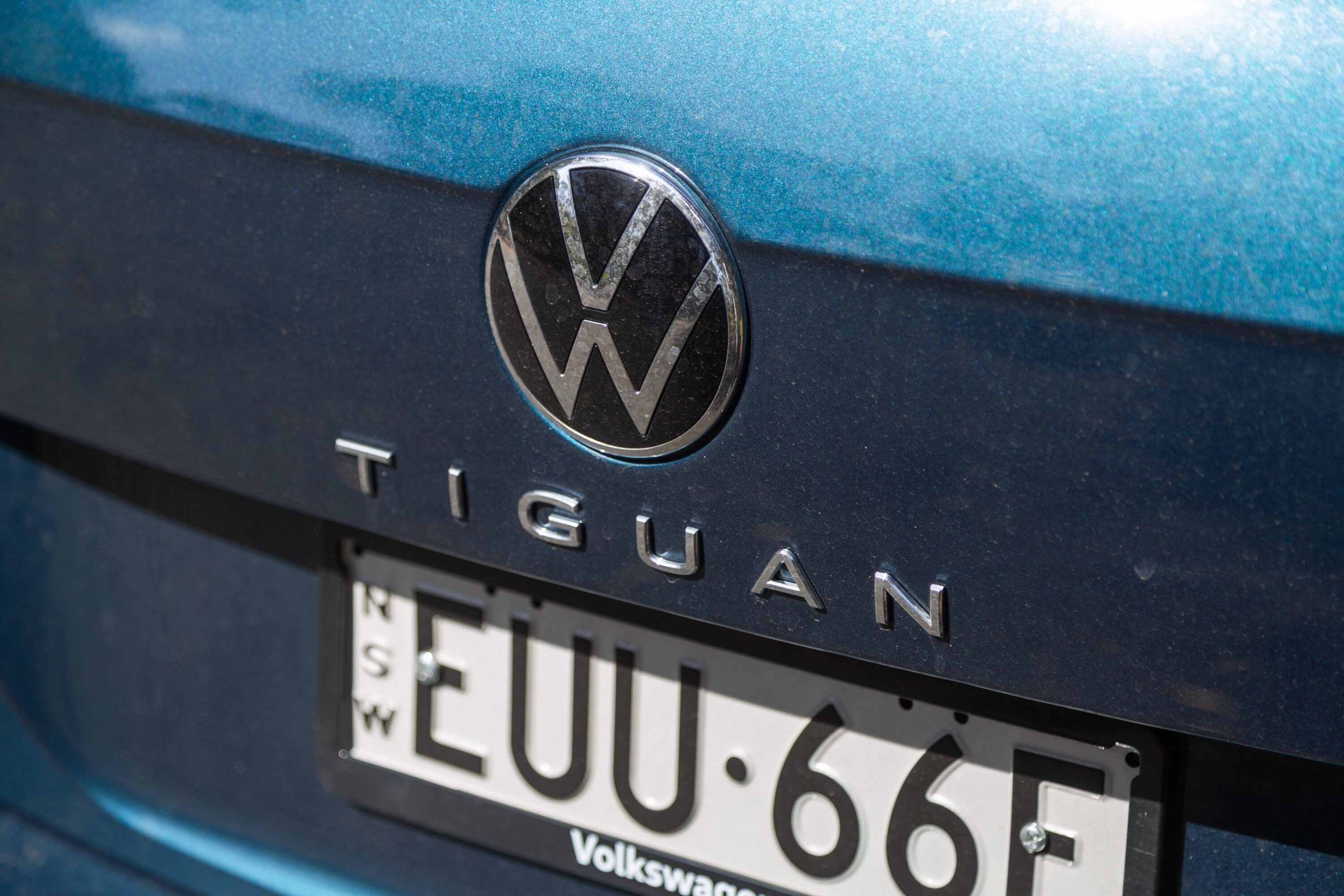
Under the boot floor is a space-saver spare tyre – which can be removed to free up even more space – while there are practical shopping bag hooks, hidden netted areas, and the ability to install a cargo net thanks to four tie-down points.
All Tiguan variants come with a standard manually-operable tailgate – an electric opening and closing feature is an option. Other rivals notably offer this as standard even on lower grades.
For those chasing more space and a third row, the Tiguan is available in long-wheelbase Allspace guise, too.
I like driving, will I enjoy this car?
Yes. The Tiguan is among the most enjoyable medium SUVs available.
With an upright driving position, low dash and generous glass area, the Tiguan has excellent visibility in all directions, making it easy to judge each corner, unlike larger and more heavily-styled rivals.
This more conventional shape may look a little dated to some, but the Tiguan is certainly not dated in the way it drives. The Tiguan range offers five powertrain choices in total, including the aforementioned diesel and two lower-tune petrols as well as the flagship R, but the high-end 162TSI – which we have recently tested – is Australia’s favourite.
In this state of tune, the VW Group’s ubiquitous ‘EA888’ engine is powerful, tractable and refined, with a little bit of exhaust bark at high revs to match the sporty character.
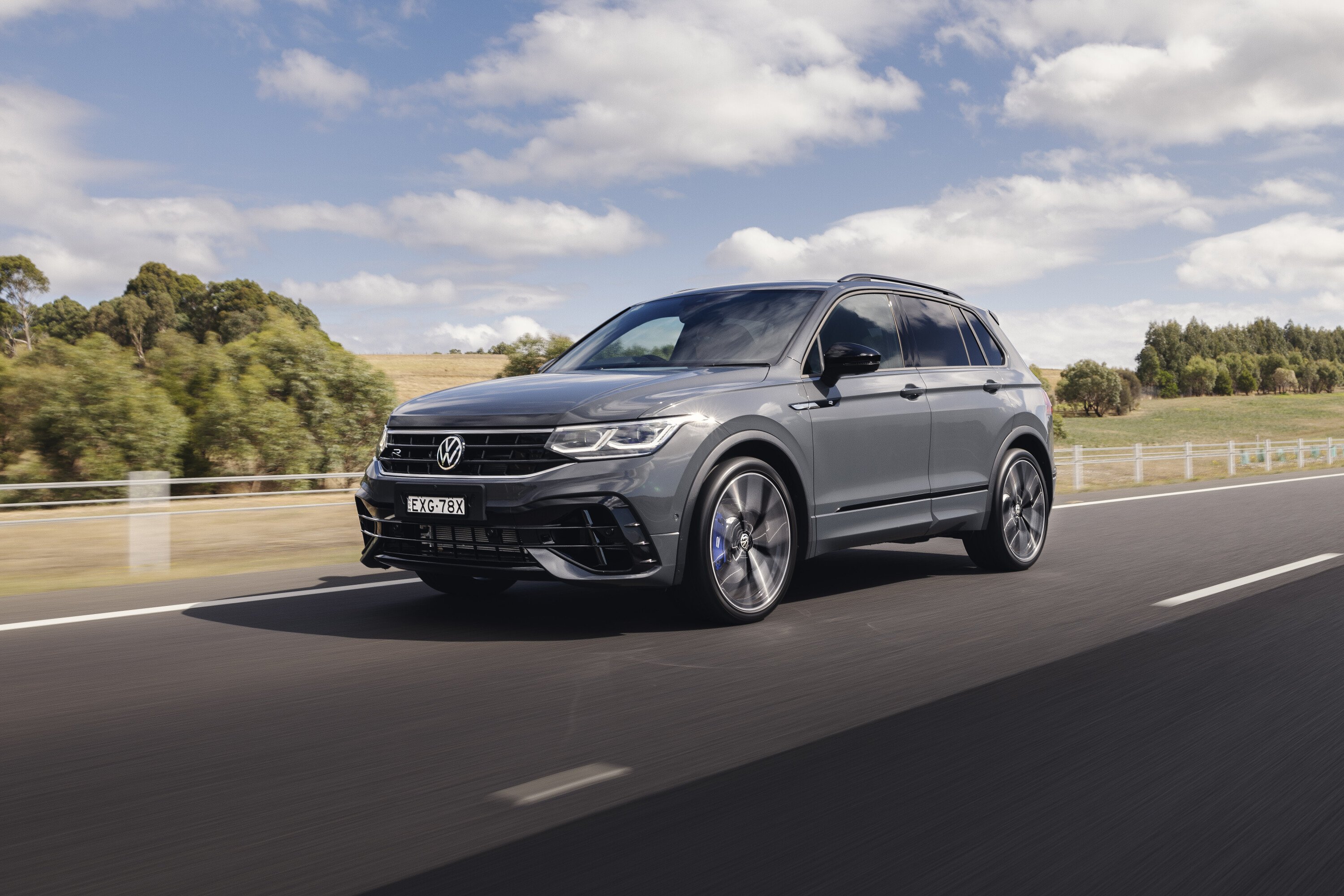
Although some bemoan dual-clutch transmissions, Volkswagens equipped with the wet-clutch variety shift smoothly and – generally – reliably. The seven-speed DSG is quicker and more satisfying to use than a conventional automatic, too.
The Tiguan is also equipped with strong brakes attached to a reassuringly meaty pedal.
Steering in an R-Line model has a progressive ratio, so it requires very little effort around town with its sharp 2.1-turn lock-to-lock ratio, though at higher speeds the tiller settles and is never nervous like a Tesla Model Y’s sharp rack can be.
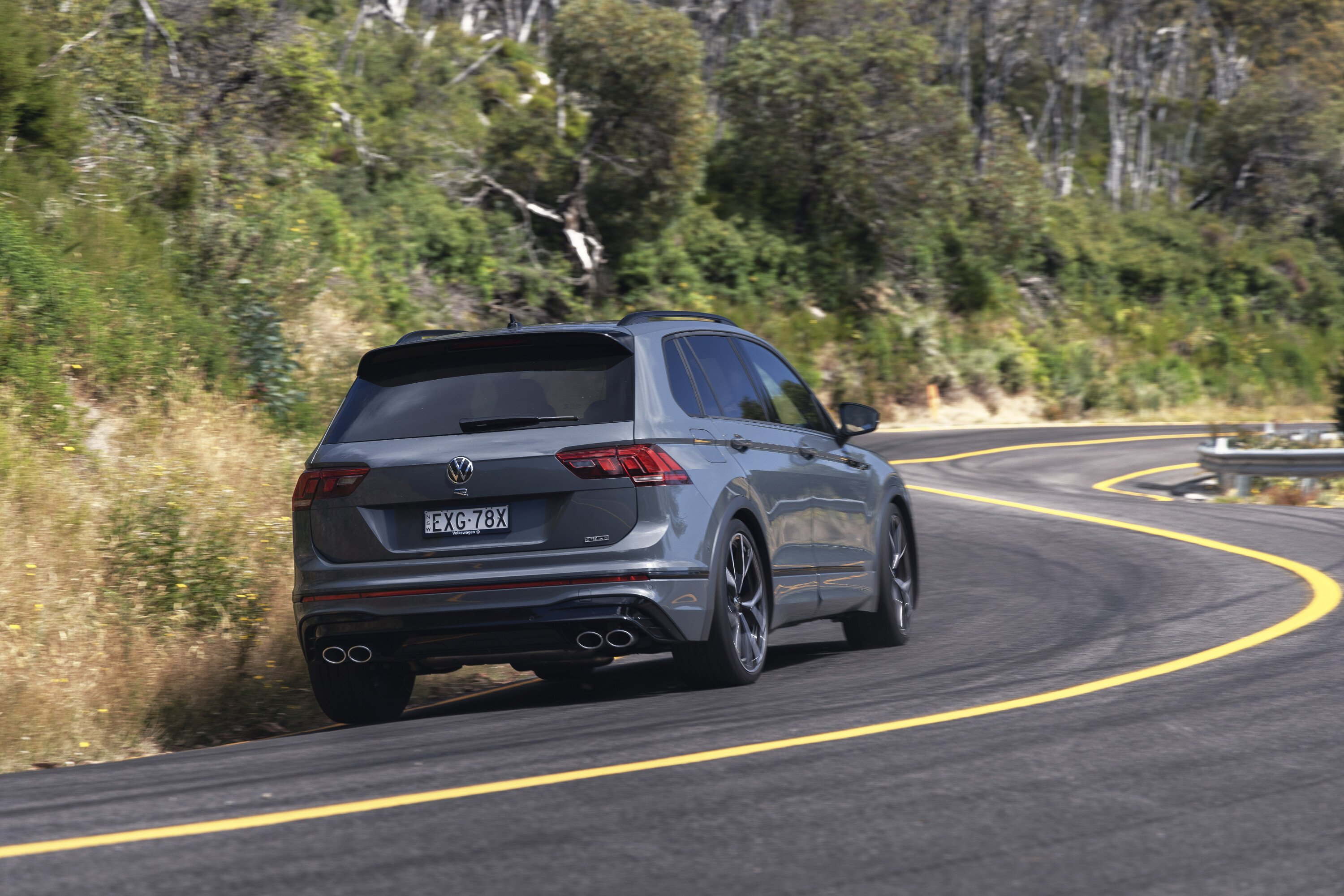
The cabin refinement and NVH suppression are superb, and the suspension is never noisy
The 162TSI’s standard-fit adaptive dampers are rare at this point in the market and bestow the R-Line with excellent breadth, providing both a comfortable urban ride in Comfort mode (despite 255/40 series Continentals wrapped around 20-inch alloys) yet rock-solid body control in Sport mode.
If there are some complaints, the Tiguan can sometimes be a little abrupt over the worst sharp-edged bumps whereas rivals with more sidewall iron out the hits. But the cabin refinement and NVH suppression are superb, and the suspension is never noisy.
The 235kW Tiguan R is, of course, a separate beast again. It’s quick, engaging, grips hard and is simply on a different plane for dynamics thanks to its angrier engine and more sophisticated, performance-oriented all-wheel-drive system.
If any of the terms in this section have left you scratching your head, these articles will help bring you up to speed!
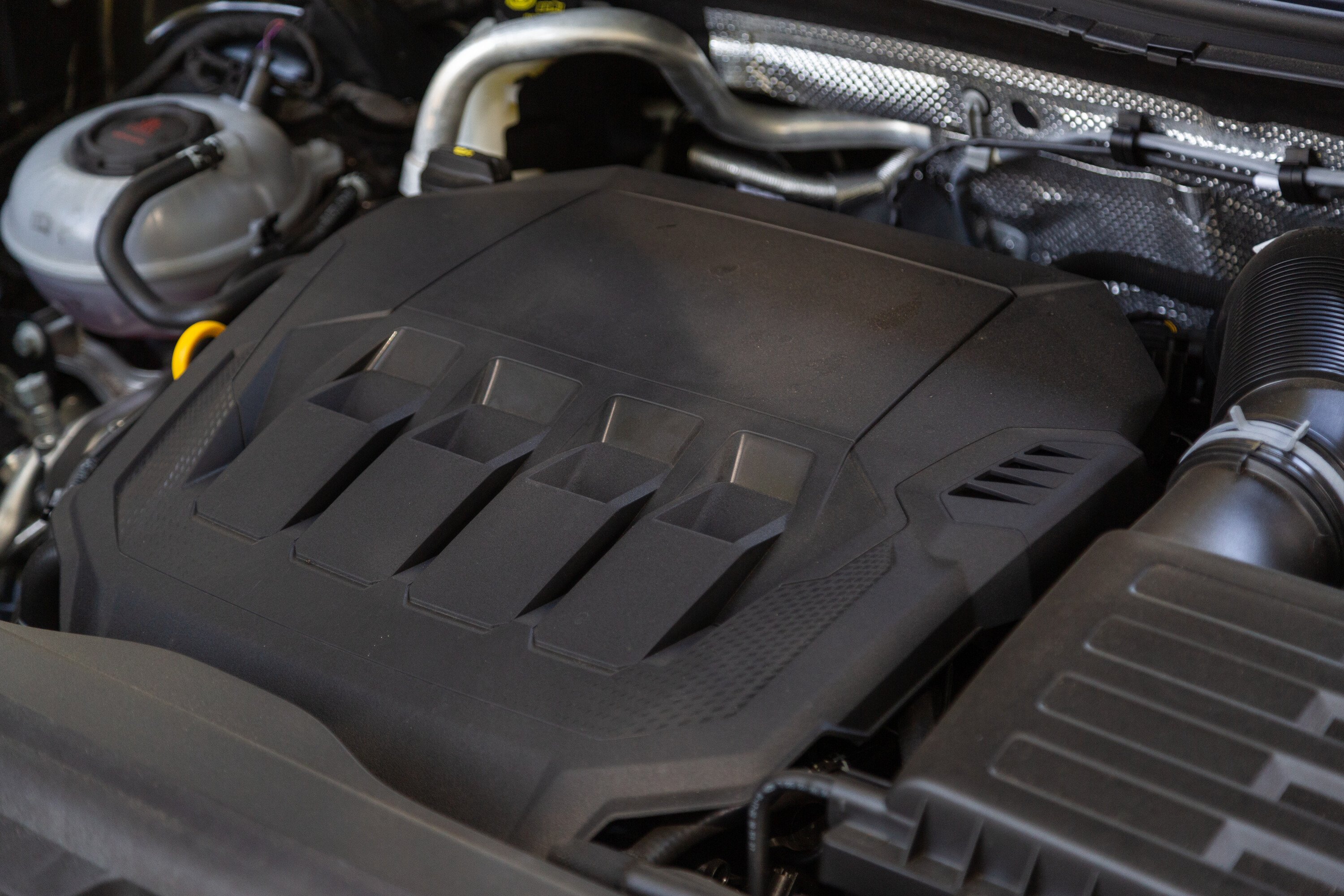
- What is a Powertrain or Drivetrain?
- Power vs torque
- Car suspension explained
- Automatic transmissions (‘gearboxes’) explained
- Chassis control systems explained
- Car vs Ute vs SUV: How the vehicle you buy should guide the way you drive
That would be the 2.0-litre diesel engine – the 147TDI, which uses an impressively low 6.1L/100km on the combined cycle as per ADR81/02 Australian fuel-efficiency regulations.
Next up is the 1.4-litre petrol 110TSI, using 7.7L/100km.
The 2.0-litre petrol engine uses 8.5L/100km in 162kW 162TSI form, while curiously the less powerful 132kW 132TSI specification uses slightly more fuel at 8.8L/100km, matching the 235kW, 2.0-litre R.
The 235kW 2.0-litre Tiguan R has a 58-litre tank, uses 8.8L/100km and requires the most expensive 98 RON premium fuel.
Aside from the base 110TSI and flagship R which both use a 58-litre fuel tank, most Tiguans have a 60-litre tank. Importantly, petrol Tiguans require premium 95 RON petrol (the R needs 98 RON), making it a slightly more expensive proposition to fill than a car that takes the cheapest 91 RON.
In our own real-world testing, we’ve recorded fuel figures of 10.5L/100km for the 162TSI R-Line).
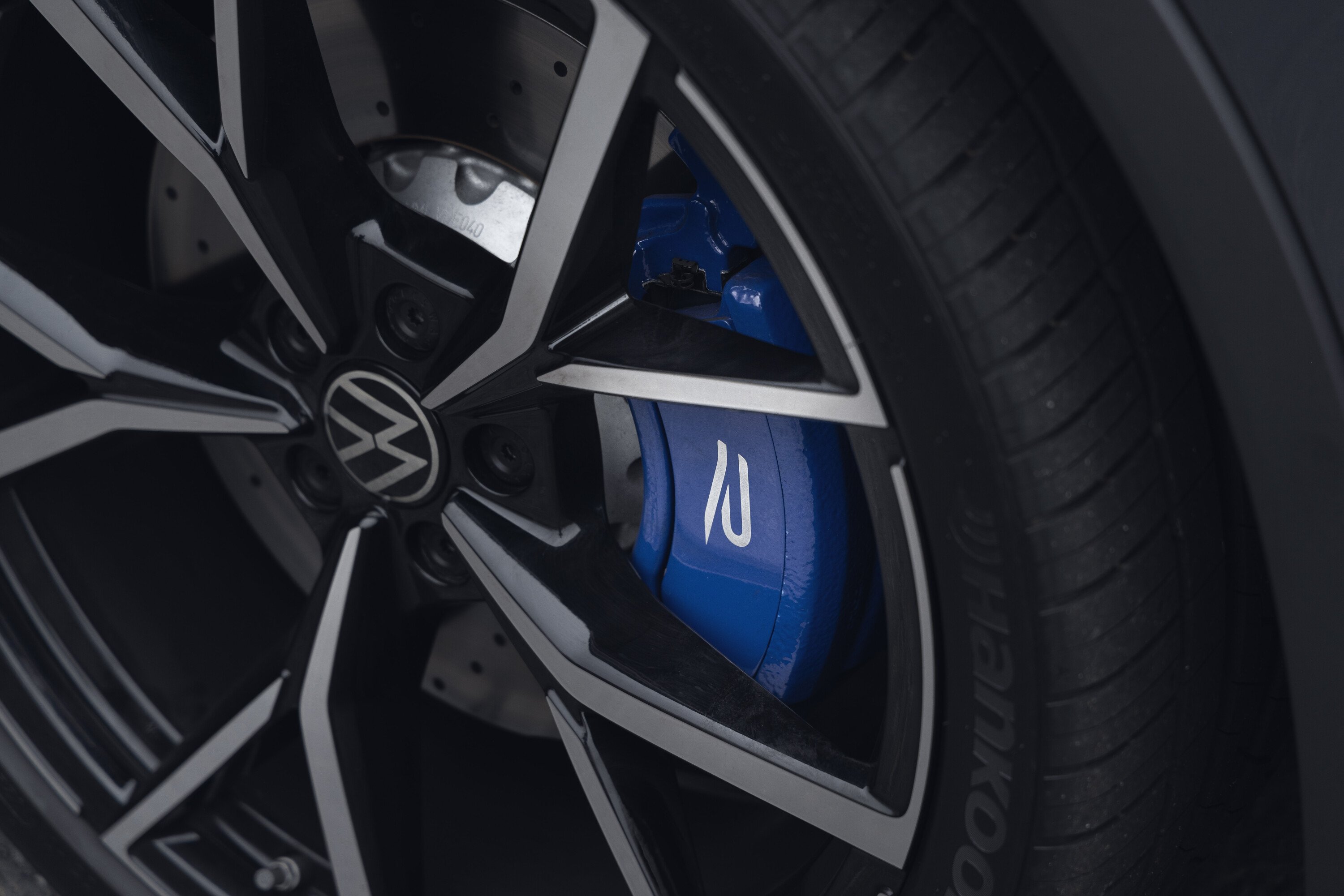
What is the Volkswagen Tiguan’s towing capacity?
With braked trailers, the 110TSI can tow up to 1800kg while the 132TSI, 162TSI and 147TDI can tow up to 2500kg.
The 235TSI Tiguan R can tow up to 2200kg. All versions can tow up to 750kg unbraked and have a 200kg maximum tow ball weight.
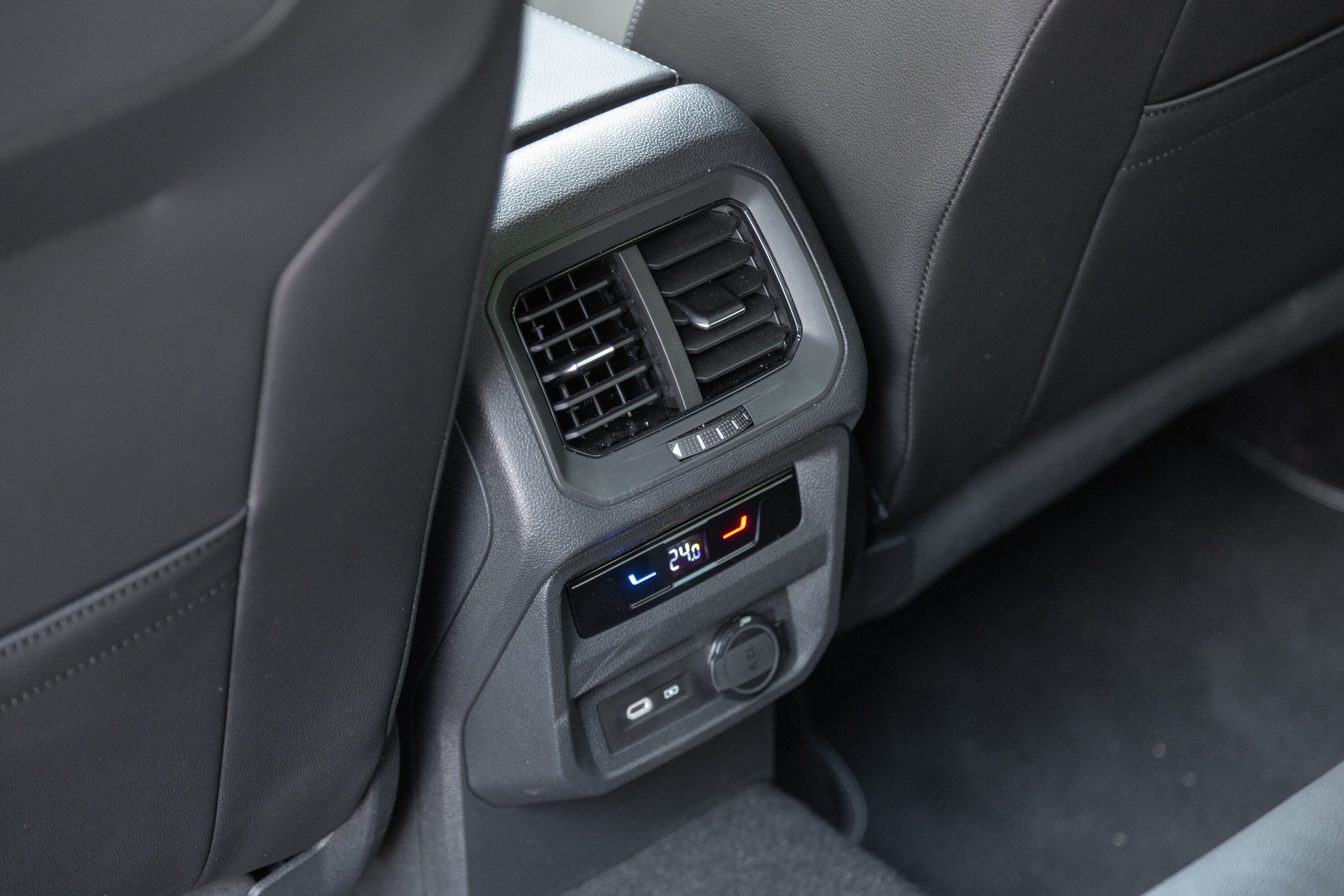
How long is the warranty and what are the Volkswagen Tiguan’s servicing costs?
All Volkswagens are covered by a five-year/unlimited-kilometre manufacturer’s warranty. Servicing is due every 12 months or 15,000km.
Volkswagen offers two pre-paid servicing schemes, spanning three and five years. A five-year prepaid plan is the best value, with prices ranging from $2850 (110TSI) to $3200 (diesel, 132TSI and 162TSI). That makes the Tiguan a pretty expensive car to service compared to, say, a Toyota RAV4.
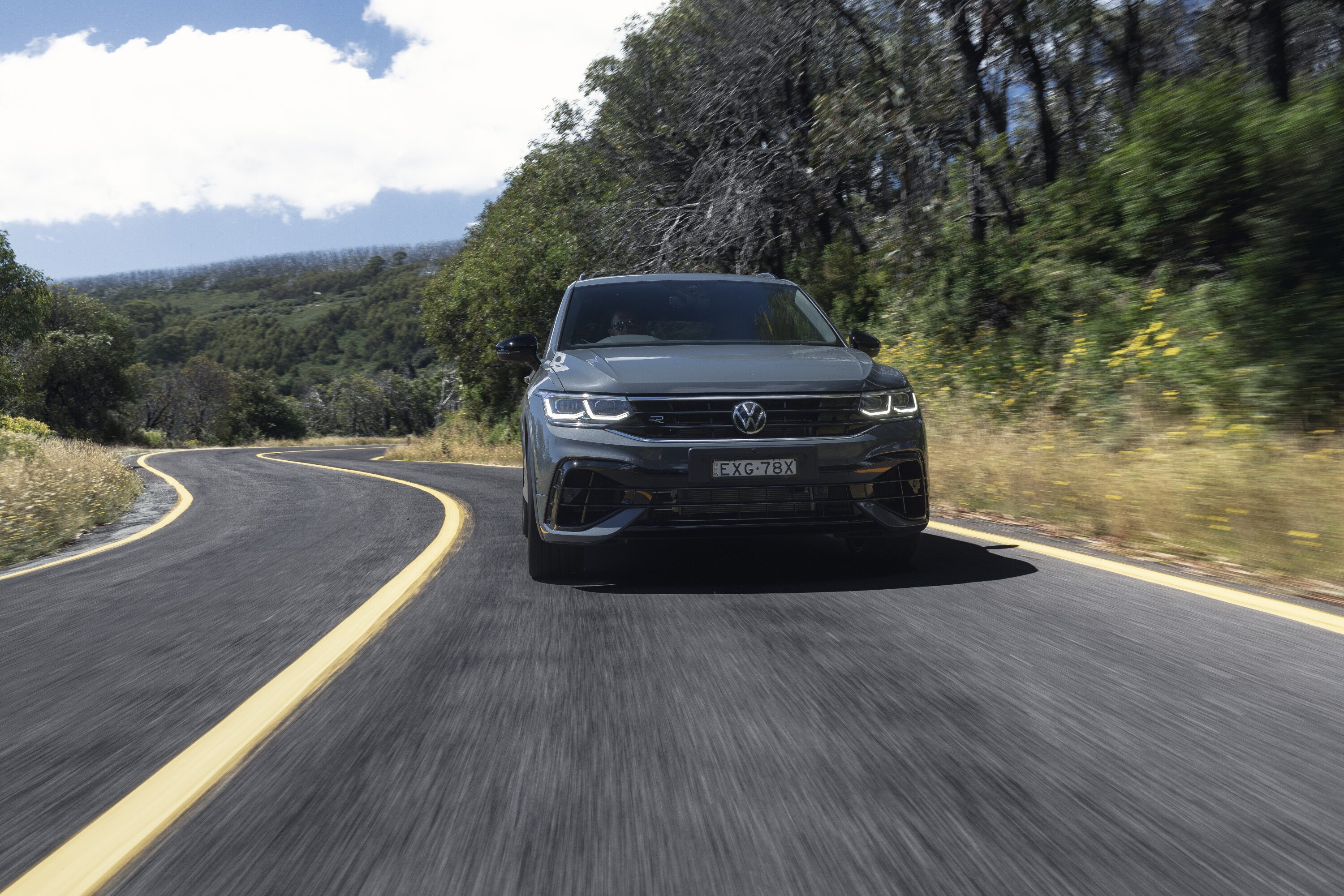
Which version of the Volkswagen Tiguan does Wheels recommend?
There’s a reason the 162TSI is so popular – it’s the best.
Although the base model offers outstanding dynamics, ergonomics and design for the price – and the diesel unbeatable driveability and efficiency – the 162TSI is a beautiful blend of all these attributes. And, with 162kW, plenty of punch.
Of course, you could also live a little and get the R. You know you want to…
What are the Volkswagen Tiguan’s key rivals?
ud83dudd3c Back to topScore breakdown
Things we like
- Premium-feeling interior
- Great handling
- Comfortable ride
- One of the best boots in its class
Not so much
- Due to be replaced next year
- Premium price compared to rivals
- Centre screen starting to feel small
- Wait times for some models



